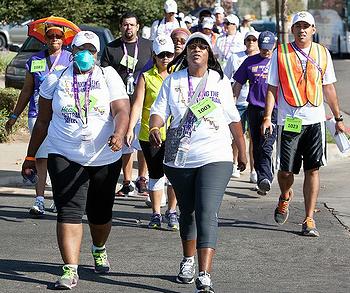
SACRAMENTO, California, March 21, 2013 (ENS) – Low-income populations, racial and ethnic minorities in California are exposed to greater levels of some air pollutants than higher-income, Caucasian populations. New research shows that as a result they suffer more asthma-related difficulties – from asthma attacks and daily medication use to work absences and emergency room visits.
In all, about 3.5 million adults and 900,000 children in California have been diagnosed with asthma. Millions more suffer from asthma-like breathing problems.

In earlier studies, children, the elderly, racial and ethnic minorities and low-income Californians were found to suffer more from asthma burdens, such as asthma attacks and asthma-like symptoms than other populations.
This research was led by Dr. Ying-Ying Meng, co-director of the Chronic Disease Program at the University of California, Los Angeles Center for Health Policy Research, and funded by the California Air Resources Board.
It focused on whether the greater asthma burden borne by Latinos, African-Americans, American Indians and Alaska Natives, Asians and Pacific Islanders is due to exposure to higher levels of air pollutants, greater vulnerability, or both.
Here, vulnerability means factors such as socioeconomic status, residential location and occupational exposure, which influence the risk of adverse health effects related to air pollution exposure.
Dr. Meng’s team found that racial and ethnic minority and low-income respondents had greater increases in adverse asthma outcomes for similar increases in exposure to nitrogen dioxide as well as particulate matter – both coarse, PM10, and fine, PM2.5.
To reach their conclusions, the UCLA researchers matched health impact data from the California Health Interview Survey to existing air pollutant and traffic data.
Annual pollutant averages for particulate matter, ozone and nitrogen dioxide were calculated for 54,000 Californians’ home addresses using data from nearby air monitoring stations.
The investigators found that some populations had higher exposures to nitrogen dioxide or particulate matter, even though they were not exposed to greater levels of ground-level ozone pollution, or smog.
Lower-income children and adults, living below 200 percent of the federal poverty level, were found to be more vulnerable to the effects of air pollution exposures compared to high income, white children and adults of the same ages living at or above 400 percent of the federal poverty level.
The 2013 federal poverty level for one person living in the continental United States is $11,490; for a family of four it stands at $23,550.
Among lower-income asthmatic children, the odds of visiting an emergency room more than doubled for every increase in nitrogen dioxide by 10 parts per billion, the researchers found.

Similar two-fold increases were observed for the odds of African American adults experiencing daily or weekly asthma symptoms and the odds of Asian and Pacific Islander adults missing two or more days of work per week.
Investigators also found that compared to white children, American Indian, Alaska Native, Asian, and Pacific Islander children had a greater increase in the odds of experiencing daily or weekly asthma symptoms for the same increase in nitrogen dioxide.
Latino children had a greater increase in the odds of using daily asthma medication for the same increase in coarse particulate matter, known as PM10. Particles less than 10 micrometers in diameter, PM10, are smaller than the width of a single human hair, so small that they can get into the lungs, causing serious health problems.
The researchers found that African-American, Asian and Pacific Islander children had greater increases in the odds of daily or weekly symptoms than white children for a comparable increase in PM10.
Sources of coarse PM10 particles include crushing or grinding operations and dust stirred up by vehicles traveling on roads.
The UCLA researchers found that asthma sufferers who lived within 750 feet of roadways with high traffic density had increases in asthma-related trips to the emergency room.
Fine particulate matter, particles smaller than 2.5 micrometers, PM2.5, tend to penetrate into the gas exchange regions of the lungs.
The World Health Organization estimates that “… fine particulate air pollution, PM2.5, causes about 3% of mortality from cardiopulmonary disease, about 5% of mortality from cancer of the trachea, bronchus, and lung, and about 1% of mortality from acute respiratory infections in children under five years, worldwide.”
The UCLA researchers also found links between asthma outcomes and the number of days for which air quality exceeded state or federal standards for ozone and particulate matter.
The U.S. Environmental Protection Agency sets standards for PM10 and PM2.5 concentrations in urban air. See the latest proposed standards here.
An extensive body of scientific evidence indicates that long-term and short-term exposures to PM2.5 cause premature death and adverse cardiovascular effects, including increased hospitalizations and emergency department visits for heart attacks and strokes.
Some practical ways to reduce exposure to particulate matter pollution can be found at: http://www.arb.ca.gov/research/indoor/pmfactsheet.pdf
Copyright Environment News Service (ENS) 2013. All rights reserved.
© 2013, Environment News Service. All rights reserved. Content may be quoted only with proper attribution and a direct link to the original article. Full reproduction is prohibited.
